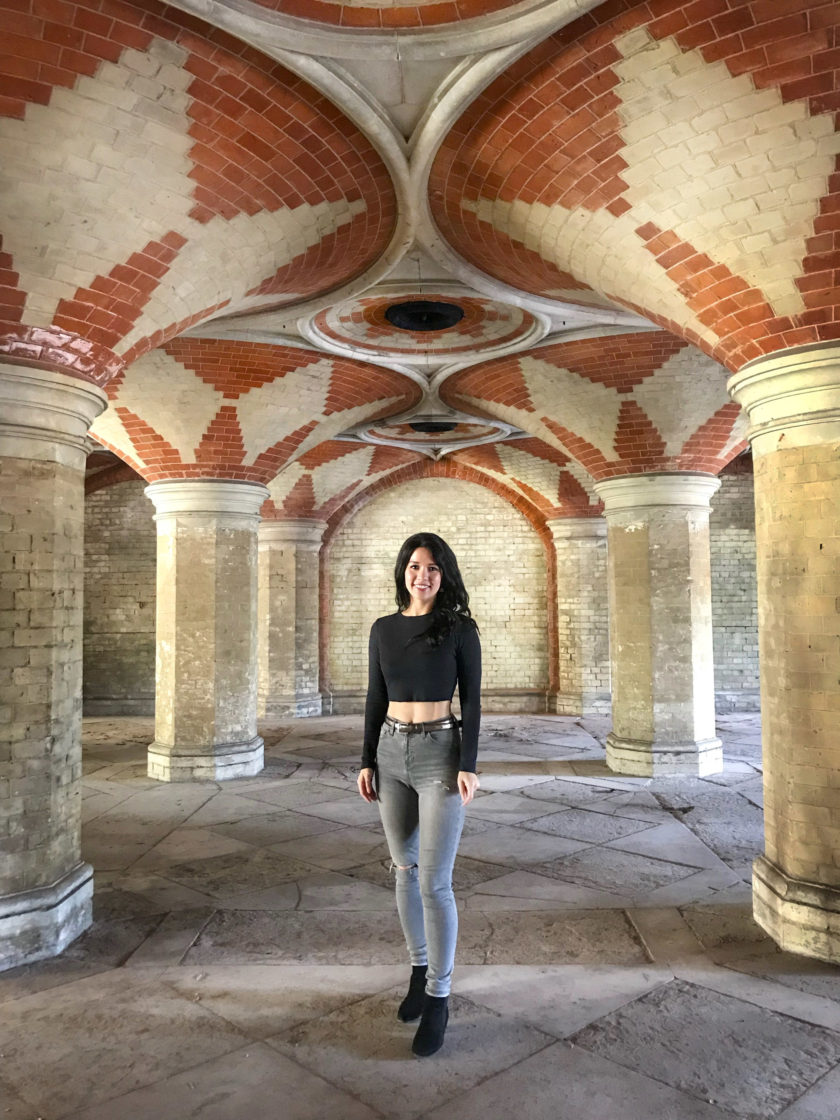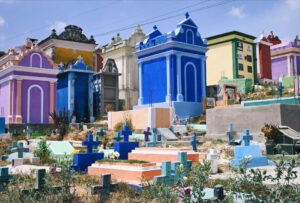
London has a vast array of historical buildings, and even as someone who has been living here for many years now, I feel like I’ve only discovered a tiny portion of them. Nonetheless, Crystal Palace Subway sticks out as being one of the most unique, but it’s not an easy place to access.
After seeing a photo of the construction with its ornately fluid ceiling contoured by cream and terra cotta brick, held aloft by stout hexagonal pillars, I wanted to see it for myself in person. Initially I assumed it was located in a far-flung country, so was surprised to learn its whereabouts was London.
It looked more like the Moorish churches I’d swooned over in Andalusia which were strongly influenced by Byzantine architecture.
I immediately looked up its exact address and disappointment hit me as I read it wasn’t open to the public. Quite predictably, this now made me want to see it even more.
However, after a little more researching, my mood lifted as I discovered there was a possible chance of seeing it after all. Crystal Park Subway opens it doors to the public three times a year for the Crystal Palace Festival, Heritage Open Day, and Open House Weekend.
I lucked out, Open House Weekend was only a couple of weeks away so I wouldn’t have to wait long.
Some of you might be asking, what’s Open House Weekend? It’s when London opens its doors to some of the city’s most incredible buildings, many of which aren’t usually open to the public. Its aim is to inspire curious folks like us about the benefits of great design.
Open House only happens once a year over two weekends in September so it’s a pretty special event in London’s cultural calendar.
Inside Crystal Palace Subway
After meeting my brother and another friend we cut through Crystal Palace Park to arrive at our end destination, in time for our 1pm group tour hosted by Friends of Crystal Palace Subway, a charity whose objective is to protect and preserve the subway and surrounding park.
Hidden under one of the main roads around the park lies the crypt-like vaulted structure, a stunning Victorian underpass that used to link the old train station to the Great Exhibition of Crystal Palace. Only this part of the route exits between the now demolished Crystal Palace High Level Station and the Palace itself.
The talk only lasted a few minutes but we learnt about the interesting history of the place and then we were left to explore the underpass on our own and take advantage of photo opportunities. I think it’s one of the most photogenic spaces in London. I’ll let you decide though.
This pedestrian underpass was built in 1865 to allow visitors to pass from the railway station to the grounds of the Crystal Palace without crossing the muddy road. The similarity of the subway to a cathedral and underground cyrpt was no coincidence, as it was designed and built by cathedral craftsmen from Italy.
In 1936 tragedy struck when a huge fire destroyed the Crystal Palace and rendered the train station practically obsolete, and it was eventually demolished. The subway thoroughfare survived, though, and took on many roles in the following years.
During the Second World War, it was converted into an air-raid shelter. After the war, children were said to use the ruins as a playground. By the ’90s the tunnels lured in the ravers, and it had a brief period of fame in the video for the Chemical Brothers’ single Setting Sun (fast-forward to 2 minutes 30 seconds).
Though the subway is now closed due to safety concerns and to ensure its preservation, through the work of the Friends of Crystal Palace Subway we can visit on special weekends to see this special landmark in London’s history.




